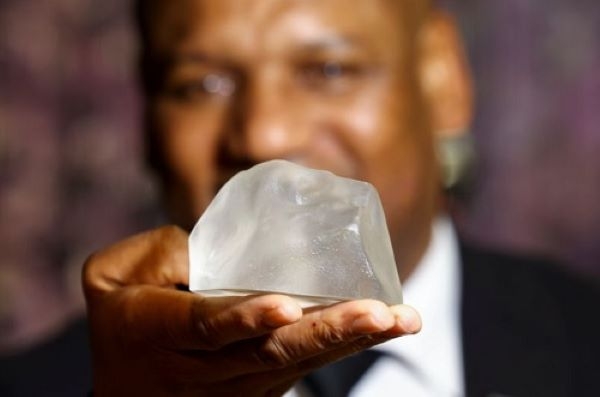South Africans ask UK to return diamond in Charles’ crown jewels
 Officially known as Cullinan I, the diamond in the sceptre was cut from the Cullinan diamond, a 3,100-carat stone that was mined near Pretoria
Officially known as Cullinan I, the diamond in the sceptre was cut from the Cullinan diamond, a 3,100-carat stone that was mined near Pretoria
Some South Africans are calling for the United Kingdom to return the world’s largest diamond, known as the Star of Africa, which is set in the royal sceptre that King Charles III will hold at his coronation on Saturday.
The diamond, which weighs 530 carats, was discovered in South Africa in 1905 and presented to the British monarchy two years later by the colonial government in the country, which was then under British rule.
Now amid a global conversation about returning artwork and artefacts that were pillaged during colonial times, some South Africans are calling for the diamond to be brought back.
“The diamond needs to come to South Africa. It needs to be a sign of our pride, our heritage and our culture,” said Mothusi Kamanga, a lawyer and activist in Johannesburg who has promoted an online petition, which has gathered about 8,000 signatures, for the diamond to be returned.
“I think generally the African people are starting to realise that to decolonise is not just to let people have certain freedoms, but it’s also to take back what has been expropriated from us.”
Officially known as Cullinan I, the diamond in the sceptre was cut from the Cullinan diamond, a 3,100-carat stone that was mined near Pretoria.
A smaller diamond cut from the same stone, known as Cullinan II, is set in the Imperial State Crown which is worn by British monarchs on ceremonial occasions. Along with the sceptre, it is kept with the other crown jewels in the Tower of London.
A replica of the whole Cullinan diamond, which is about the size of a man’s fist, is displayed at the Cape Town Diamond Museum.
“I believe it should be brought back home because, at the end of the day, they took it from us while they were oppressing us,” said Johannesburg resident Mohamed Abdullahi.
“All proceeds of colonialism, slave trade and imperialism are illegitimate transactions,” Everisto Benyera, associate professor of African Politics at the University of South Africa in Pretoria, told Al Jazeera. “As such, whether the British monarch purchased the Cullinan diamond at a nominal fee, or whether it was gifted to them by the Transvaal government, does not negate the fact that this transaction occurred within the broader occurrence of colonial relations.”
“The British monarchy must play its part in breaking this colonial relationship by acknowledging the role that it played,” added Zimbabwean-born Benyera. “And one of the biggest ways that it can acknowledge is to stop using our diamonds on their regalia, is to stop using our resources during their ceremonies, because …we are no longer part of the British Empire.”
Others said they did not feel strongly about it.
“I don’t think it matters any more. Things have changed, we’re evolving,” said local resident Dieketseng Nzhadzhaba. “What mattered for them in the olden days about being superior … it doesn’t matter to us any more.”
Source: bbc
Trending World

US designates Colombian cocaine gang a terrorist group
22:08
EU waters down plans to end new petrol and diesel car sales by 2035
22:05
Rebels say they will withdraw from key DR Congo city at US request
21:59
Trump files $5bn defamation lawsuit against BBC over Panorama speech edit
12:26
FBI foils New Year's Eve terror plot across southern California, officials say
11:38
'Bandits' kidnap worshippers during church service in Nigeria
10:42
US accused of using illegal workers at centre processing refugee claims in South Africa
11:59
Nigeria apologises over Burkina Faso military flight that saw 11 servicemen detained
16:30
Don't let Matilda's death fuel anger, say family of Bondi victim, 10, at funeral
12:03
Uganda prison officer sacked for 'politicking' on TikTok
19:40



